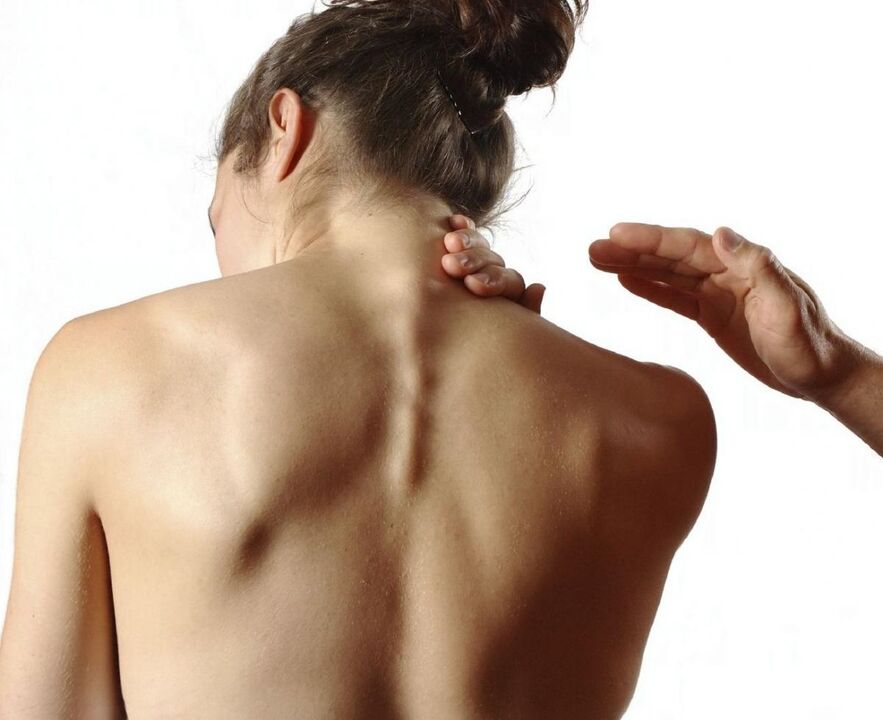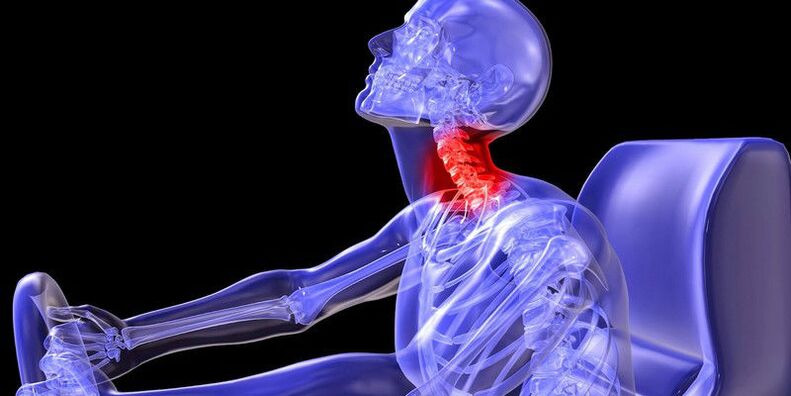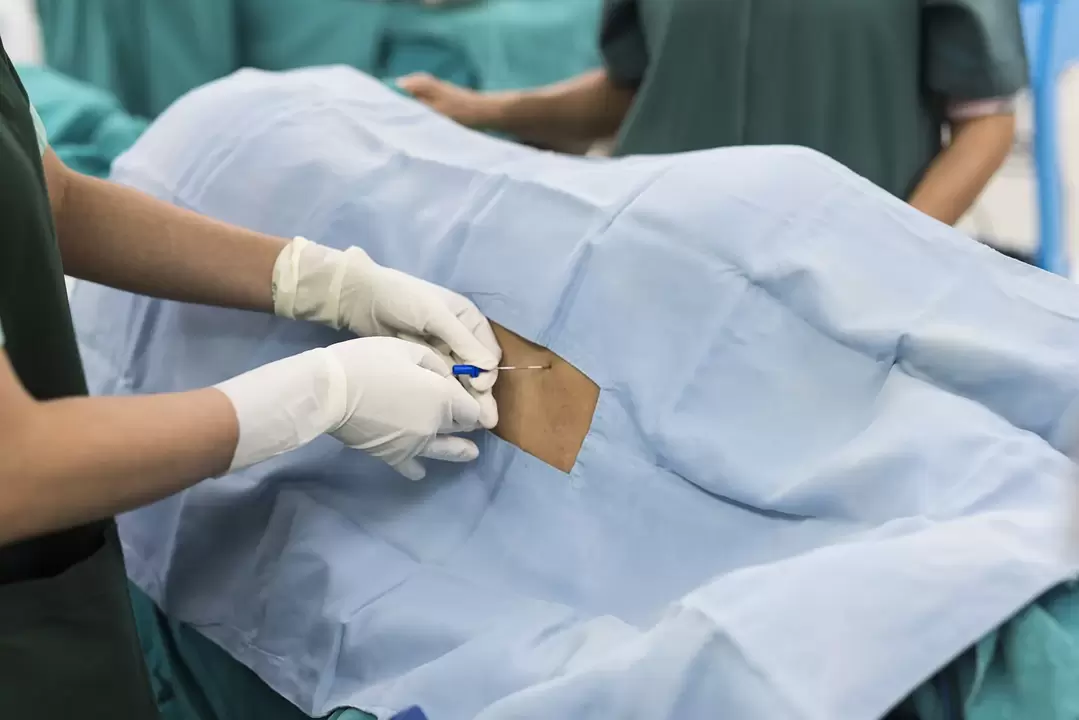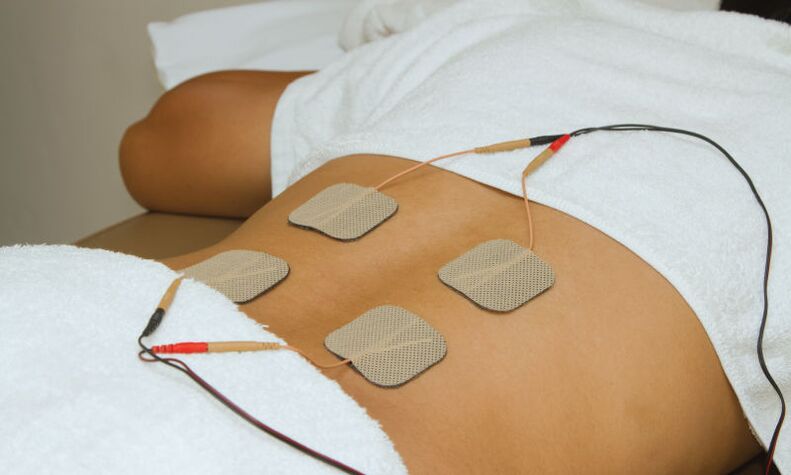
Everyone experiences back and neck pain periodically. This may be due to recent physical activity, a sedentary lifestyle, or the presence of severe spinal lesions.
To find out the cause of the pain and possible complications of the disease, you should have regular medical examinations. Often, severe back pain can be caused by a herniated disc or severe damage to the spine from an injury.
In elderly patients, low back pain is associated with degenerative diseases of bone tissue. In the future, the progression of the disease will lead to the need for surgical intervention, at which point medical treatment will not bring the desired effect. Therefore, you should not delay seeing a doctor or determining the pathology independently.
symptom
Pain sensations begin in the neck area, after which they pass to the area between the shoulders and shoulder blades. In this condition, the patient experiences pain when moving the head or shoulder joint. This kind of performance will become more and more intense in the future, and you will feel stiff when you turn your head.
The main symptoms of a person with severe spinal lesions are:
- numbness of the shoulder and neck muscles;
- Periodic pain in the upper back;
- muscle tension;
- clicks and characteristic sounds of joints;
- Restriction of free movement of the shoulder that occurs after sleep;
- Soft tissue tingling;
- Sharp shots from different sides of the back;
- Discomfort around ligaments and neck.
When these symptoms appear, a person begins to think about why the back and neck hurt and what needs to be done to relieve the discomfort. In this case, you should understand the underlying cause and treat it promptly.

reason
In most cases, unpleasant sensations in the back and neck area are caused by muscle spasms and subluxation of the vertebrae. They are difficult to notice during a doctor's general examination, so more efficient diagnosis is needed. Computed tomography and magnetic resonance imaging are often prescribed to visualize even small structural changes. The first technique is great for examining bone formation in the spine, and MRI can allow you to identify the cause of muscle and soft tissue injuries.
muscle spasms
The main reason it appears in the back is thought to be muscle spasms. They may occur over time after small cramps develop into severe muscle tension. The following factors may be the cause:
- prolonged periods of time in uncomfortable positions;
- Incorrect posture during sleep;
- lots of physical activity and active movement;
- Hypothermia, the result of which is an inflammatory process in the muscles.
Even a small amount of airflow can cause muscle cramps. Improper use of air conditioners and high temperature differences can lead to inflammation of the muscle tissue.
vertebral subluxation
In the case of mechanical injury, the vertebrae are displaced to the underlying vertebrae. Usually, this phenomenon is observed in the case of serious injuries in car accidents. Subluxation is accompanied by damage to ligamentous organs, muscle tension, and damage to the joint capsule. Doctors can identify pathology by palpation, severe pain when turning the head, and moving the neck.
Subluxations are treated by surgeons and traumatologists. A person can adjust the vertebrae independently, but only after a highly qualified consultation from a specialist. In mild pathological cases, use a Shants collar for immobilization for one month.

cervical osteochondrosis
Another cause of neck pulling and pain can be osteochondrosis. This is a degenerative disease of the spine caused by metabolic disorders. The cervical portion has a weak muscular corset, which puts a lot of load on the vertebrae. As a result, the vertebral arteries are pinched and the necessary nutrition of vital brain structures does not occur.
The following factors can be the cause of osteochondrosis:
- metabolic disorders;
- a sedentary lifestyle;
- genetic susceptibility;
- low temperature;
- prolonged periods of time in uncomfortable positions;
- obesity.
In order to prevent the occurrence and further development of osteochondrosis, just do gymnastics and follow the doctor's advice.
intervertebral hernia
Disc herniation is an inflammatory degenerative disease associated with disc deformation and annulus fibrosus rupture. The discs act as shock absorbers, reducing the damaging effect of the vertebrae on each other.
Over time, they lose elasticity and flexibility, leading to severe pain and discomfort. When an intervertebral hernia occurs, the patient may experience frequent headaches and muscle pain. Insufficient brain nutrition can lead to dizziness, weakness, and constant sleepiness.
possible complications
Even mild pain can affect a person's health or lead to serious complications that require immediate surgical intervention. Neglecting inflammation and degenerative disease can lead to lesions of the vascular system, severe throbbing pain, and destruction of the brain.
After vertebral artery occlusion, people will experience symptoms such as weakness, fatigue, and hallucinations. If the patient does not seek medical attention in time, cerebral ischemia, stroke and other diseases may occur. Over time, they can be fatal.
Pathological diagnosis
After examination by a physician, a research diagnostic method is prescribed to gain a broader understanding of the pathology. For mechanical and vertebral injuries, X-ray-based CT (computed tomography) is required. X-rays are fixed in all tissues of the body and displayed in different ways on the monitor screen. Experts receive dozens of layered images, which contain 3D images of the skeletal structure of the spine.
This method has its contraindications. During pregnancy and breastfeeding, MRI (Magnetic Resonance Imaging), which uses electromagnetic waves to detect degenerative diseases and soft tissue lesions, is best. Modern tomography scanners allow you to obtain high-quality images of all areas of your back in minutes and find out the cause of back and neck injuries.
A lumbar puncture is performed if doctors suspect infectious diseases of the central nervous system, polyneuropathy, and other central nervous system disorders of various etiologies. This method is widely used in neurology. During surgery, the patient is given spinal or spinal anesthesia while an anesthetic is injected into the subarachnoid space. The injection is as close as possible to the root of the spinal nerve.

medical treatement
When the first symptoms appear, most people use anti-inflammatory and pain relievers to resolve the problem. For the start of the therapeutic effect, the following drugs are used:
- Analgesics with significant analgesic effect based on dipyridine sodium or nalbuphine;
- Non-steroidal anti-inflammatory drugs, which act directly on the site of inflammation and effectively reduce swelling;
- Muscle relaxants that reduce muscle tissue tone and relieve tension;
- Locally acting anesthetic and anti-inflammatory ointments.
Doctors can prescribe pills and ampoules, which have immediate results. As a complex treatment, ointments or gels can be used to relieve puffiness, and chondroprotective agents can be used. This group of drugs restores joints and has anti-inflammatory effects.
Physical Therapy Program
In addition to medication, the patient underwent physical therapy procedures. It can be therapeutic yoga, special massage or mineral water and mud therapy. To choose the correct gymnastics exercises and routines, you will need to consult a doctor who will prescribe therapy sessions. In some cases, stretching can lead to exacerbations, so physical therapy alone is not recommended.

Another treatment method is manual therapy. The specialist initially performs manual massage to prepare the soft tissue for further exposure. Then it goes into the joints and spine. This manipulation with the help of the hands effectively helps improve blood flow and relieve pain. A deep effect on the back muscles removes tension and swelling.
Some experts prescribe electrophoresis to patients. The method is based on constant electrical discharges applied to diseased areas of the body. This method has the following advantages: reducing inflammatory processes in the muscles of the back and neck, eliminating edema and pain, reducing muscle tone, improving the blood supply to the back tissues. The treatment effect was observed after the first operation.

























